Laserfiche has been around for over 30 years, but I can guarantee (unless you are a regular reader of my blog, or based in the USA) you have probably never heard of it. Hopefully this is all about to change.
Laserfiche can be described as a Content Services Platform of CSP. If you’re not sure what this is, or just thought Laserfiche was a Document Management System then I have included a section at the end of this article that defines a CSP, ECM and DMS.
Whilst Laserfiche is widely used throughout the US, particularly in government and financial services it has not had much exposure in Europe. However, thanks to Laserfiche’s top European solutions provider, MBS based in the Isle of Man, it has started to gain significant interest in the offshore trust and corporate services sector.
I’ve just returned from Laserfiche’s first Empower Summit held in Europe. It was a mini version of their hugely successful annual Empower conference in their home city of Long Beach, California. Held over 3 days the was packed full of opportunities to learn about the Laserfiche suite of products, hear customer case studies, discover what’s new and, of course, to talk to solution providers and other customers.
Laserfiche in the UK and Financial Services
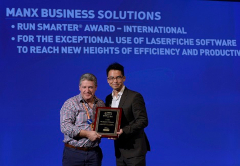
As mentioned above, Laserfiche’s top reseller in Europe is MBS, who have been delivering Laserfiche solutions for over 10 years. They have many clients in the Crown Dependencies, Ireland, UK and other offshore locations. I am fortunate enough to work with many of them and have seen first hand the benefits trust and corporate services providers are able to achieve through this platform.
In the following sections I will use examples from real customer situations to explain some of the benefits of Laserfiche and why it should be on your list of potential solutions when looking for a DMS or Content Services Platform.
Ease of Integration

In today’s technology enabled business no system can exist in isolation. The benefit we get from technology is when we reuse data and information across multiple systems.
I come across far too many instances where data has to be re-input into multiple systems so it is refreshing to see tools like the Laserfiche Connector work so effectively. This no-code addin allows you to integrate third party applications with Laserfiche, using ‘screen scraping’ technology. Integrations can be performed quite easily by a super-user (with appropriate permissions of course) delivering significant business benefit at no cost. The Connector even allows two third party systems to be integrated outside of Laserfiche.
The Laserfiche Connector is just the start point when it comes to integrating Laserfiche into a complex IT environment. There is a full Software Developers Toolkit (SDK) and APIs available.
The power of Forms and Workflow
Many business processes rely on checklists and forms, this is particularly so in the trust and corporate services world. The checklists are designed to evidence compliance and appropriate due diligence where it is not possible to totally automate the process.
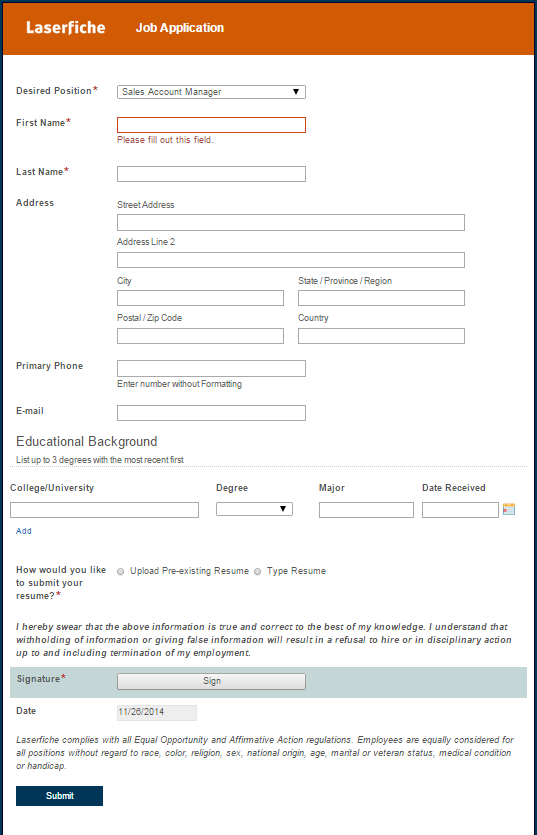
Laserfiche Forms is a standalone product that comes bundled with the core enterprise content management system. It allows complex web-enabled forms to be produced that include business processes and conditional logic.
Forms can be customised to suit an organisations own style and can be shared both internally and externally. Laserfiche Forms is ideal for simple processes like holiday requests or expense claims, but really comes into its own when combined with workflows to automate and regulate entire end-to-end business processes. I have recently seen Laserfiche used to automate the Order to Pay process of a complex multi-jurisdiction business.
At the Summit in Edinburgh I heard a very interesting case study of how Laserfiche Forms and Workflow had been used to build a bespoke Safety Management System for a super yacht business. Who would have thought that a system like Laserfiche was being used on standalone servers and laptops onboard many of the largest superyachts cruising the Mediterranean and Caribbean?

Laserfiche as a tool for Digital Transformation
The examples given above of Laserfiche Forms, Workflow and Connector illustrate how Laserfiche can be used as a tool to support Digital Transformation.
I’ve written about the subject of Digital Transformation before, on my blog here, where I used the example of Laserfiche’s Digital Transformation Model to demonstrate that Digital Transformation is not just about technology. I won’t repeat my points here but if you are unfamiliar with these concepts I would recommend reading the article in full.
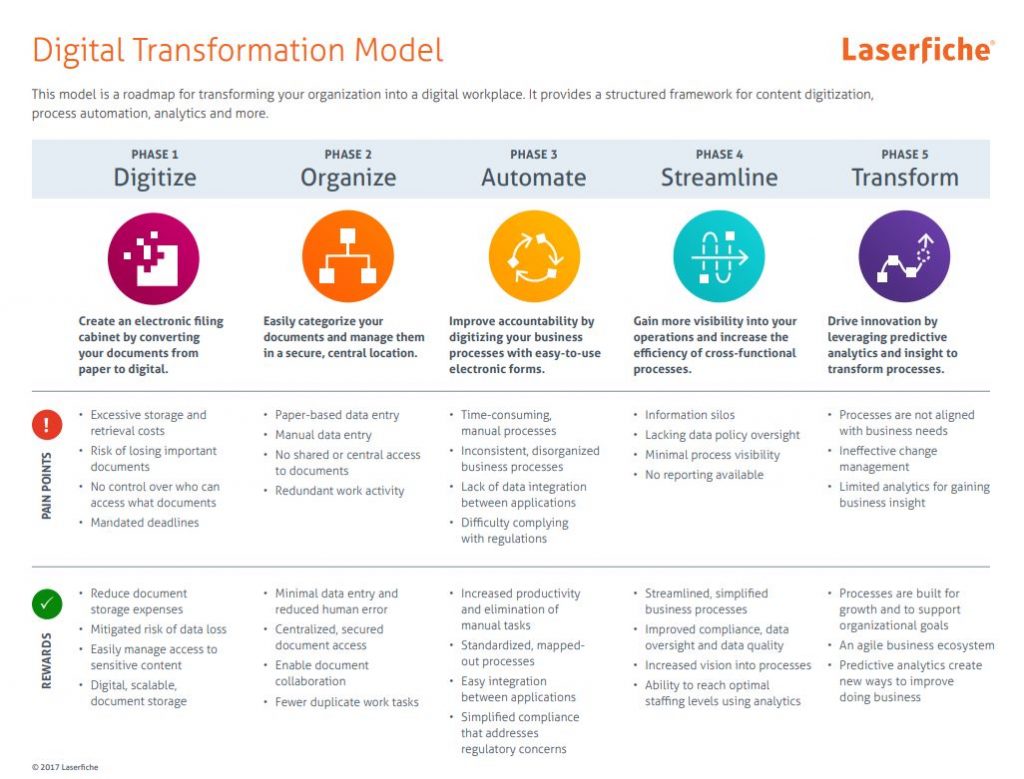
Summary
To summarise, I would recommend any organisation that has a lot of content to manage and is struggling to see the benefits of technology, to have a look at Laserfiche. You may be surprised at how it could transform many of your document centric and paper based processes.
If you are interested and would like to learn more, then do get in touch and I can explain how some of my clients are seeing the benefits of tools like Laserfiche.
Footnote:
The section below is designed to explain the differences between Document Management Systems, Enterprise Content Management and Content Services Platforms.
What is a Content Service Platform?
A Content Services Platform (CSP) is an evolution of what used to be called an Enterprise Content Management (ECM) system. ECM itself is an evolution of more traditional Document Management System (DMS)
DMS —> ECM —> CSP
When systems like Laserfiche were first introduced they provided an innovative way of storing and indexing documents, within a central repository, to make them more easily retrievable. A Document Management System became the starting point for the ‘paperless office’. Even though in my experience, all they seemed to do was make it easier to generate paper!
Enterprise Content Management is much more than just a means for storing and managing an organisation’s documents. ECM also includes the tools, strategies, and processes used to capture, store, retain, and manage content. ECM appeals to those looking to manage and configure large volumes of structured and unstructured data, which could include emails, images, video as well as documents.
According to Gartner, a CSP is:
a set of services and microservices, embodied either as an integrated product suite or as separate applications that share common APIs and repositories, to exploit diverse content types and to serve multiple constituencies and numerous use cases across an organization
A CSP is innovative because it represents a fundamental shift in how content is managed by large organisations. CSPs don’t work based on storing and cataloguing every single scrap of information. Rather, they create expansive repositories that are linked with APIs to different parts of the organisation. What this means is that:
- Data can be stored once, and then used, edited, and manipulated endlessly by different people, users, or containers
- There’s a single source of truth
- Versioning can be completed automatically
Gartner’s evaluation of Laserfiche
In 2018 Gartner replaced its Magic Quadrant for Enterprise Content Management with a new one for Content Services Platforms. Laserfiche features in this document where Gartner note that:
- Laserfiche’s vision focuses on digital transformation of content in the enterprise by bringing modern, multimodal interfaces and agile workflow design capabilities to customers and business users.
- In 2017, Laserfiche experienced significant growth, especially in its cloud business, and expanded its R&D resources. It now takes a cloud-first approach to developing new features. It has introduced flexible pricing models, including temporary users for peak activities, and programs to help customers migrate from legacy systems.
- Laserfiche scored highest in reference customer satisfaction for value for the money spent. It had strong satisfaction scores overall, especially for negotiation, technical support and its peer community.
(Source: Gartner Magic Quadrant for Content Services Platforms, 2018)
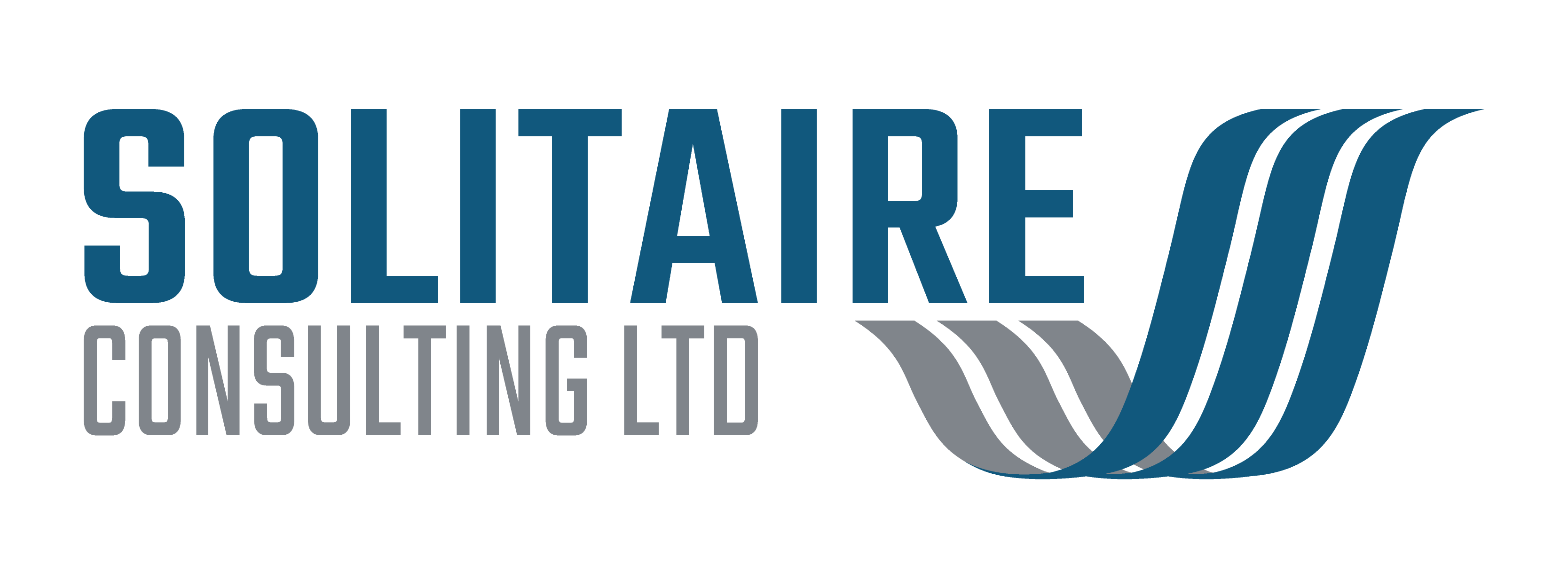
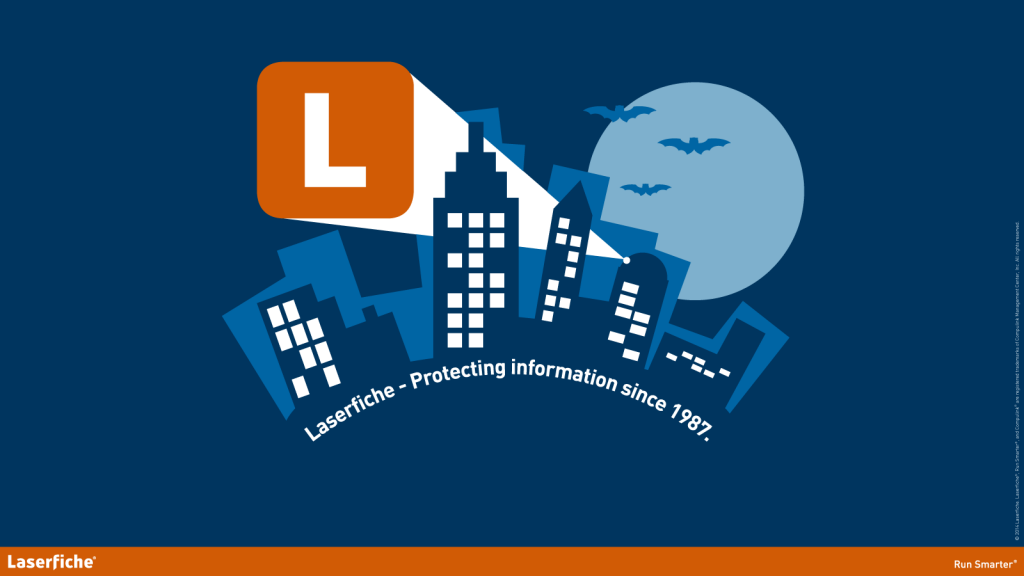




One Response